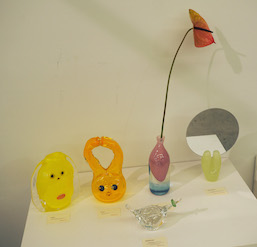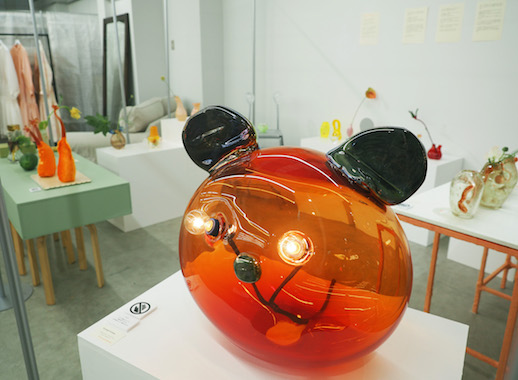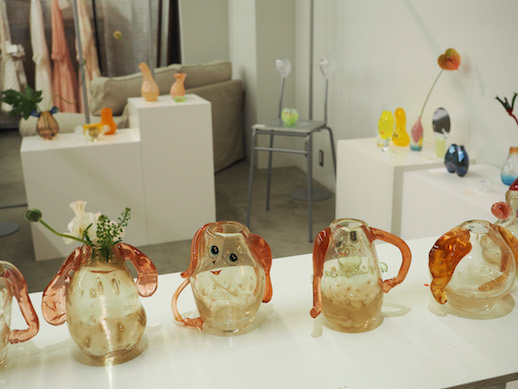Family / きみと暮らす by Yuri Iwamoto


Currently based in the glass blowing and glass art center of Japan, Toyama Prefecture, she is a curious artist who is carving her own niche in the fiercely competitive art scene and beginning to catch the attention of some influential curators such as Himawari Serizawa, who invited Iwamoto to show her work at Shibuya Miyashita Park’s Equaland. The exhibition, which runs until April 12, is titled “Family” and studies Iwamoto’s profound relationship with glass, the objects she creates and the observer.
In some ways Iwamoto’s work inhabits a space which Roland Barthes would classify as studium and punctum. The viewer is drawn to Iwamoto’s cutesy glass creations which on the surface fit nicely into the well-documented kawaii Japanese aesthetic which is the studium. The punctum, however, comes to light in the fact that Iwamoto subverts this assumption by using objects like the human heart and lungs as inspiration, and has a desire to attach a slightly subversive relationship between the living and inanimate objects.
Inspired by legendary Finnish glass designer Oiva Toikka, Iwamoto spent her time in Helsinki, from 2016-201, nurturing an appreciation for Finnish design and its special relationship with Japan seen by the popularity of brands such as Marimekko and illustrative literature such as Tove Jansson’s “Moomins.”
“I graduated from Musashino University and my graduation work was related to bodies,” says Iwamoto in a recent interview with Tokyo Art Beat. “I made some sculptures such as the heart, stomach and immune system. The texture of glass is just like the texture of the mucous membrane. For a year, after graduation, I worked at the Suntory Museum of Art and learned more about traditional Japanese art and then entered Toyama City Institute of Glass Art in 2019. And I’m still a student in Toyama. I’ll graduate this September or October.”

Iwamoto’s current exhibition at Equaland is an impressive display of her idiosyncrasies and method of working with the mutability of glass. The exhibition, titled “Family / きみと暮らす” is a look into the relationship we have with everyday objects. Iwamoto explains, “The concept is that you have a partner with your daily life. But it’s not necessarily a certain person or a pet. It might be your houseplants or running shoes, or your bicycle. Perhaps it might be a mole on your tummy. Your life is watched over by many things before you know them. So I want my glass pieces to be like them. I want people to take these pieces home and for the work to stimulate them. Especially nowadays when many people stay at home more, I want to give energy to their homes.”
Iwamoto, who has two upcoming exhibitions at Household in Himi Toyama and minä perhonen elävä in Tokyo’s Bakurocho district, has developed a profound relationship with glass. She speaks about how, when working with glass, that it naturally wants to reshape into its original form. The artist needs to push against, mould and as Iwamoto describes it, “have a conversation with it.”
“Family / きみと暮らす” by Yuri Iwamoto at Equaland Shibuya until April 12.
https://www.instagram.com/gan_gannmo/
https://yuriiwamoto.tumblr.com

Text and photography by Paul McInnes
Edited by Jennifer Pastore

Paul McInnes
Paul McInnes








